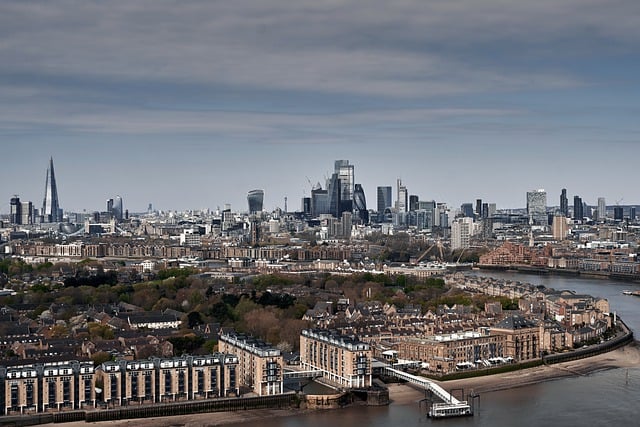
Moving to a new house in London is both a challenge and an opportunity. By planning ahead, understanding the local property market, and taking advantage of the city’s services and community offerings, you can make the transition smoother and start enjoying your new home in one of the world’s most vibrant cities. Whether you’re moving for work, family, or a fresh start, London has something to offer everyone.
Moving to a new house is always a significant event, but doing so in a bustling metropolis like London brings its own set of challenges and opportunities. Whether you’re relocating within the city or moving to London from elsewhere, it’s crucial to be well-prepared. Our expert consultants from BestLondonRemovals.co.uk prepared comprehensive guide to help make your move as smooth as possible.
- Understanding London’s Property Market
London’s property market is one of the most dynamic and diverse in the world. Prices can vary significantly from one borough to another, so it’s essential to research thoroughly before deciding where to move.
- West London: Known for its posh neighborhoods like Chelsea, Kensington, and Notting Hill, this area offers a mix of luxury apartments and Victorian homes. It’s perfect for those looking for an upscale lifestyle, but be prepared for higher property prices.
- East London: Traditionally more affordable, areas like Shoreditch, Hackney, and Stratford have seen rapid gentrification. This part of London is popular with young professionals and creatives.
- South London: Areas like Clapham, Brixton, and Greenwich offer a blend of residential tranquility and vibrant local scenes, often at more affordable prices than central locations.
- North London: Known for its greenery and family-friendly neighborhoods like Hampstead and Highgate, this area offers a balance between city living and suburban comfort.
- Planning the Move
Once you’ve chosen your new home, planning the move itself is the next big task.
- Hiring a Removal Company: London has a plethora of removal companies, but not all are created equal. When selecting a company, consider factors such as customer reviews, insurance policies, and the range of services offered. Some companies also provide packing services, which can be a lifesaver if you’re short on time.
- Timing Your Move: London traffic can be a nightmare, especially during peak hours. If possible, plan your move for a weekday during off-peak times. Additionally, consider avoiding the end of the month, as this is when most people move, and removal companies may charge higher rates.
- Parking and Permits: London’s narrow streets and limited parking can pose challenges. Ensure you have the necessary permits for the removal van, especially if you’re moving to a central or restricted area. Some boroughs require advance notice, so it’s worth checking with your local council.
- Settling In: Utilities and Services
Setting up utilities and other services in your new home is crucial for a comfortable start.
- Utilities: Contact utility providers for electricity, gas, and water to inform them of your move. This is also an excellent time to compare providers and potentially switch to a better deal.
- Internet and TV: London offers a wide range of broadband and TV packages, but connection times can vary. It’s advisable to book your installation in advance, especially if you work from home and need a reliable internet connection from day one.
- Council Tax: Don’t forget to inform your local council of your move. Council tax rates vary depending on the borough, and it’s your responsibility to ensure you’re registered at the correct address.
- Navigating London: Public Transport and Getting Around
London’s extensive public transport network is one of the best ways to get around.
- The Tube: The London Underground is the city’s most iconic mode of transport. With 11 lines covering most of Greater London, it’s the quickest way to travel, especially during rush hour.
- Buses: London’s red buses are not only a great way to see the city but are also essential for reaching areas not served by the Tube.
- Cycling: With increasing investment in cycling infrastructure, London is becoming more bike-friendly. Consider getting a bike, especially if you’re moving to a borough with good cycle paths.
- Meeting the Neighbors and Building a Community
One of the best parts of moving to a new area is the chance to build new relationships.
- Local Events: London is a city of neighborhoods, each with its own identity and community spirit. Check out local events, markets, and festivals to meet people and get a feel for the area.
- Joining Local Groups: From book clubs to sports teams, there are countless opportunities to get involved in community life. Apps like Meetup can help you find local groups with similar interests.
- Schools and Education: If you have children, researching local schools is essential. London has a mix of state and private schools, as well as international schools catering to expatriate families.
- Final Tips for a Smooth Transition
- Budget for Additional Costs: Moving is expensive, and costs can quickly add up in London. Factor in additional expenses such as new furniture, travel costs, and potential storage fees.
- Stay Organized: Keep all your documents, keys, and essentials in a separate, easily accessible bag on moving day. This will save you time and stress when you arrive at your new home.
- Enjoy the Journey: Moving to London is an exciting adventure. Take the time to explore your new area, enjoy the city’s unique character, and make the most of your new surroundings.










